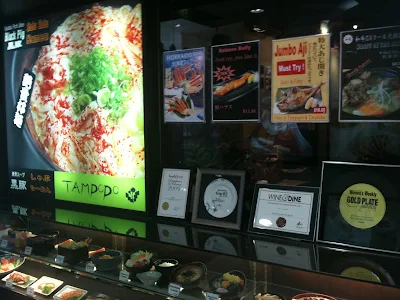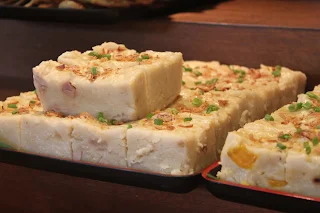The specialty of Tampopo's is Kyushu inspired black pig flavoured ramen noodles. Meant to be eaten slurpy, the accompanying milky thick soup is one to savour - the above images were taken at the outlet at Novotel Liang Court along River Valley Road. The quality of the freshly made noodles is significant, for combined with the pork slices, garnishings and hard boiled brown egg, the whole experience oozes with
a warm satisfaction hardly matched by street side noodle stalls. Maybe the stock in the soup links back
to the first boiling ten years back.
Bee and I had green tea ice cream topped up by red beans for dessert. This was after an entree of exquisitely grilled unagi (eel).

































